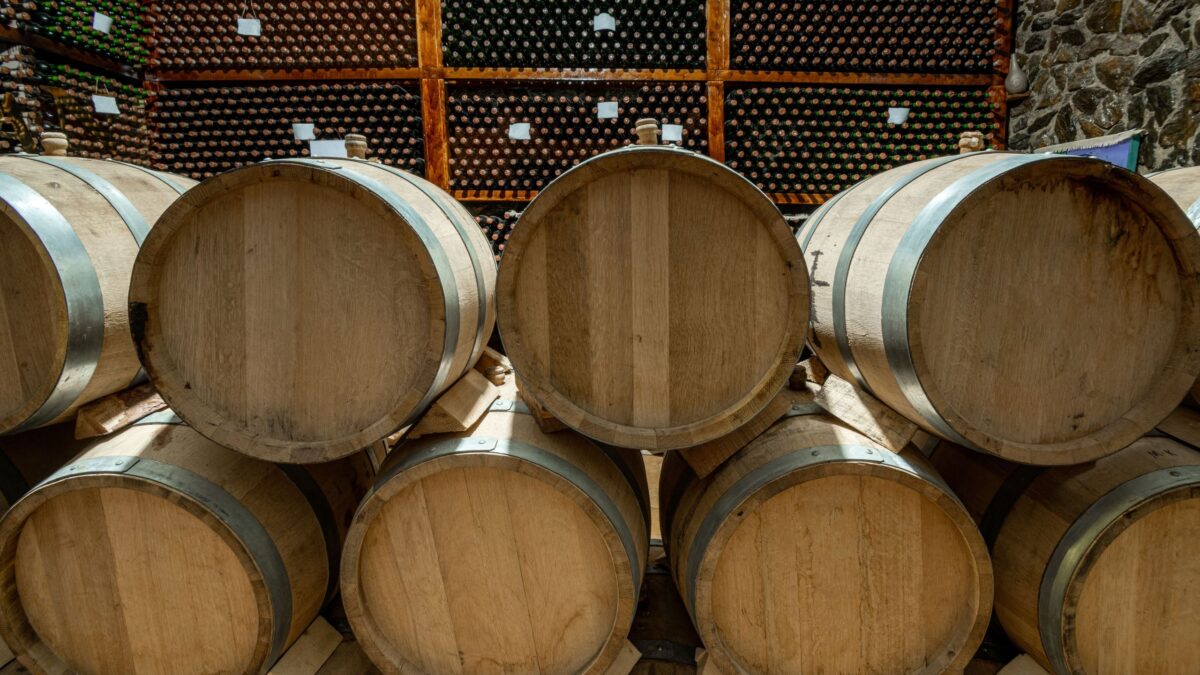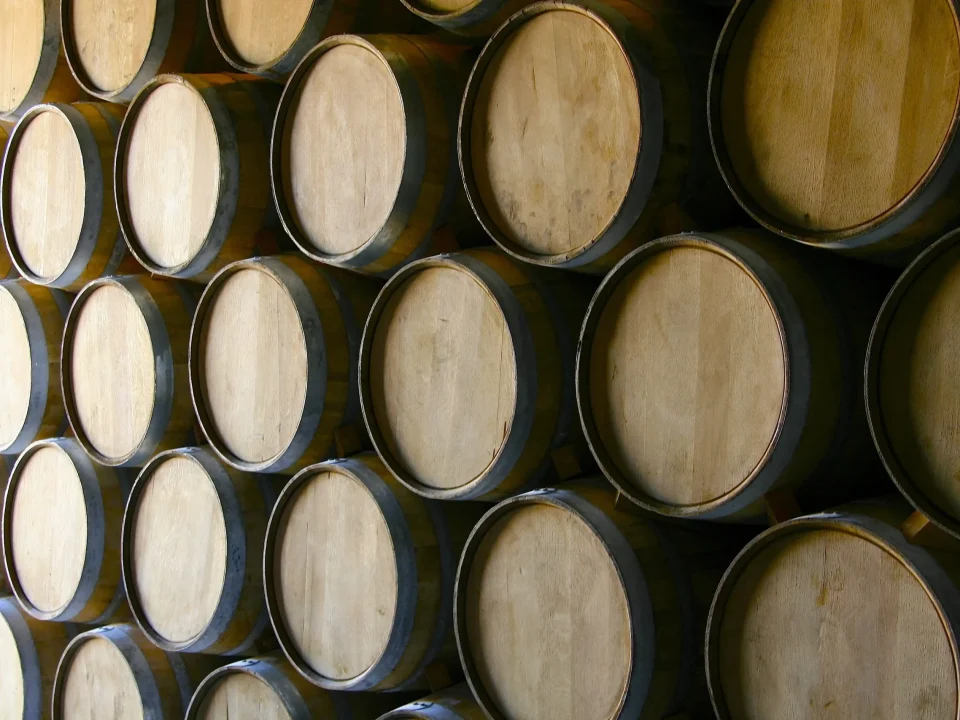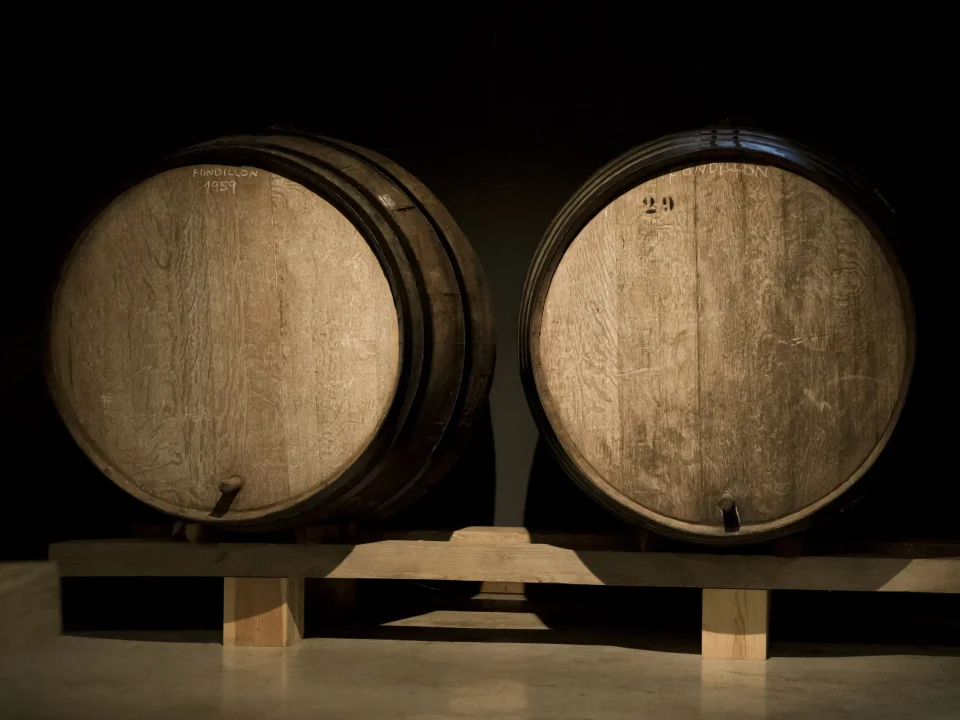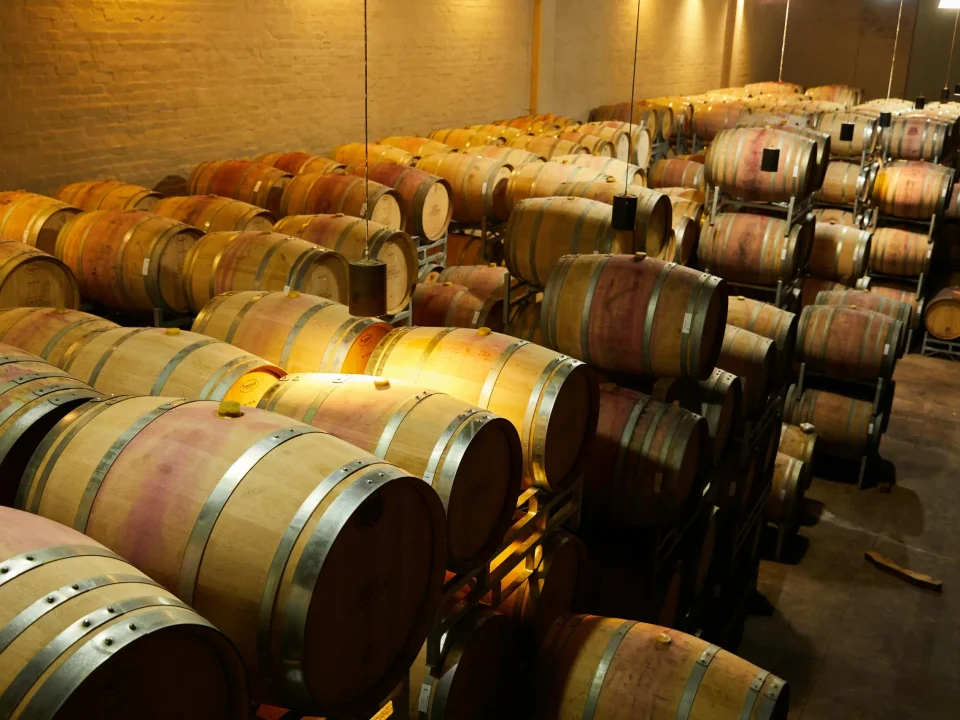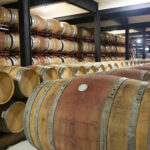
How To Pressure Test Used Whiskey, Bourbon, and Wine Barrels
February 21, 2024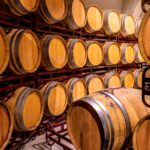
Wine and Wood: Exploring the Chemistry Behind Barrel Aging
March 3, 2024Unveiling the unique characteristics of barrel-fermented wines produced through barrel fermentation, they tend to possess more robust structures, rounder mouthfeels, and greater aromatic complexity than their counterparts. This difference is partly a result of barrels going through significant chemical reactions, which cause changes that result in complex aromas from wood and improved organoleptic properties. Furthermore, the quality of wine barrels plays a large part in the overall quality of the wines.
Barrel fermentation adds unique aroma and taste compounds to wine through yeast autolysis; their distribution can be improved through batonnage, the stirring of dead yeast cells, and sediments.
Wood contains cellulose, hemicellulose, and lignin, which, when heated under pressure, produces aromatic molecules, including furan phenol aldehydes, that have an impactful aroma in wine: light toasting brings out more subtle aromatic notes while heavier toasting heightens them further. Connect with one of our wine barrels experts at Rocky Mountain Barrel Company today to learn more!
The remaining phenolic compounds in wine can undergo transformation through contact with lees, which are the dead yeast cells that settle during fermentation. As lees release proteins into the wine, they contribute texture and a yeasty aroma to the final product. Furthermore, sur lie aging on lees has increased aromatically active compounds such as lactones and nonvolatile esters (such as furanic aldehydes). Oxygen helps reduce melanoid tannins found in lees, making barrel-fermented wines less astringent and resistant to protein degradation. As a result, overall tannin concentration decreases, and wine becomes less astringent and more resistant.
Barrel Body
Barrel-fermented wines often exhibit a creamier texture and showcase notes of vanilla, baking spice, or coconut. These characteristics arise from compounds derived from oak, contributing to the distinct style of winemaking. This technique has gained popularity, especially in the production of both white and red wines. Visit Rocky Mountain Barrel Company to learn more about barrel fermentation and where to get the best quality wine barrels. Contact us now!
Oak Barrels come in many shapes, sizes, and types. They’re used during wine’s fermentation and aging processes as an added layer of complexity and texture. They influence its aroma and flavor through leaching of its phenolic compounds into the wine, imparting flavors such as vanilla, baking spice, cocoa, or coffee; the native oak lignins also hydrolyze into sugar molecules as well as aromatic compounds like aldehydes or volatile phenols – contributing both complexity and influence to what will ultimately create its finished barrel-fermented wines.
Barrel-shaped fermentation tanks create an even temperature for wine fermentation, maintaining vibrant fruit notes while still allowing natural acidity to shine through. This method is frequently employed when producing white and sparkling wines, while red wines must ferment in large wooden vats.
The Aromas
Wine tasting can be daunting for newcomers due to the extensive vocabulary involved. From bar slang to industry-specific acronyms, there are numerous terms that may be unfamiliar to many wine enthusiasts.
Notably, barrel fermentation is a wine production technique where grape juice and yeast are placed into oak barrels to ferment and age, imparting unique flavors through interaction with oxygen during fermentation and aging.
Fermentation occurs in stainless steel tanks, where yeast feeds on sugar to produce alcohol and carbon dioxide before Malolactic fermentation begins. Over several months, this bacteria, called Oenococcus oeni, converts malic acid to lactic acid to give the wine its velvety smoothness and creamy mouth feel.
Wine Barrels can add aromas to wines through micro-oxygenation, in which an infinitesimally small amount of oxygen enters a barrel during its aging period and binds with polyphenols in the barrel-fermented wines, softening their impact. They can also add secondary characteristics like cooked or stewed fruits, yeast hints such as nutmeg and allspice, and creaminess from fermentation byproducts called lees (dead yeast cells left over from fermentation).
The Flavors
A wine barrel’s type enormously influences its aromas and flavors. Oak, for instance, can impart toasty vanilla notes in white wines, while spices or cloves can come through more strongly in red wines depending on their charring degree (how deeply burned to create that toastiness). Wine Barrels provide a steady infusion of oxygen over time, gradually softening tannins and acidity while creating a rounder and more balanced wine. Furthermore, this interaction between wood and phenolic compounds (including tannins) alters their flavors; depending on which oak species were grown in which climate, different oak barrels may offer differing flavor profiles.
Fermentation involves yeast digesting sugar to produce alcohol and CO2. This process can occur in stainless steel tanks and wine barrels; fermenting in wooden vessels typically produces wines with more complex, dried fruit characteristics. Barrel fermentation allows a secondary fermentation called Malolactic Fermentation (ML), whereby bacteria transform malic acid from grape skins into lactic acid for softer, creamier wines.
Though oak barrels remain the traditional wine fermentation and aging choice, some winemakers experiment with alternative vessels. To get the best quality used barrels, contact Rocky Mountain Barrel Company today. Contact our barrel expert and discuss your requirements to obtain the best deal.
The Texture
The texture of wine is shaped by three key elements: acidity, tannins, and body. Acidity contributes sharpness or tartness to the taste, tannins provide mouthfeel, and body refers to the weight or richness influenced by factors like alcohol content, phenolic compounds, or malolactic fermentation.
Wine-fermented wines generally exhibit greater complexity and structure than those made in stainless steel tanks, as well as more integrated wood tones due to barrel fermentation being completed in the same vessels used for aging – this explains why so many top Burgundy producers and high-end California wineries opt to barrel ferment their white wines.
Barrell fermentation can assist a wine in creating its structure and texture by softening its tannins through their conversion to lactic acids, increasing the concentration of phenolics through binding them together, as well as adding bread-like or yeasty notes during sur lie barrel aging (on the lees).
Oak barrels used in wine production typically consist of Quercus alba, Quercus robur, or Quercus sessilis species. New or used models may be found, frequently labeled to indicate where their wood came from (Alliers or Troncais, for instance).
Conclusion
As wine ages, wood extractable compounds permeate it through the pores in the wood and the barrel’s rim. This process leads to various changes, including decreased astringency, an increase in polymerization and condensation reactions between flavonoid molecules resulting in reduced but stabilized color, and the creation of nonvolatile phenolic compounds that contribute to aroma. Contact Rocky Mountain Barrel Company today to learn more about barrel fermentation and where to get some good quality wine barrels!

